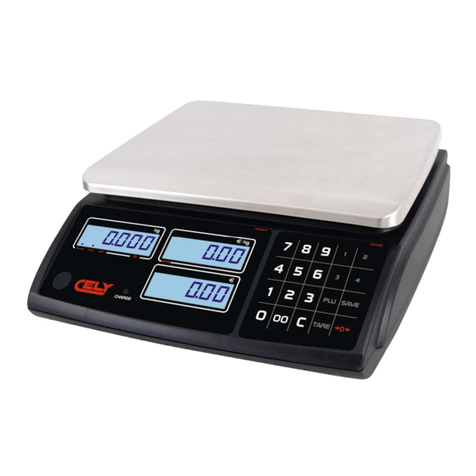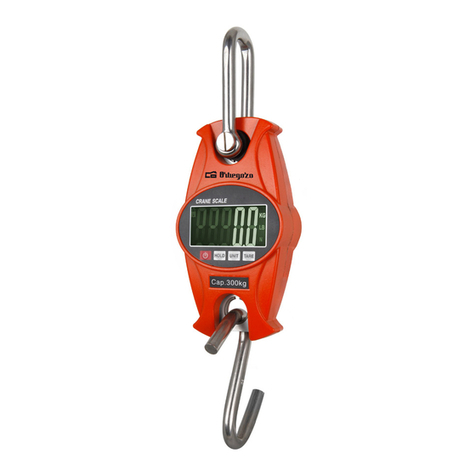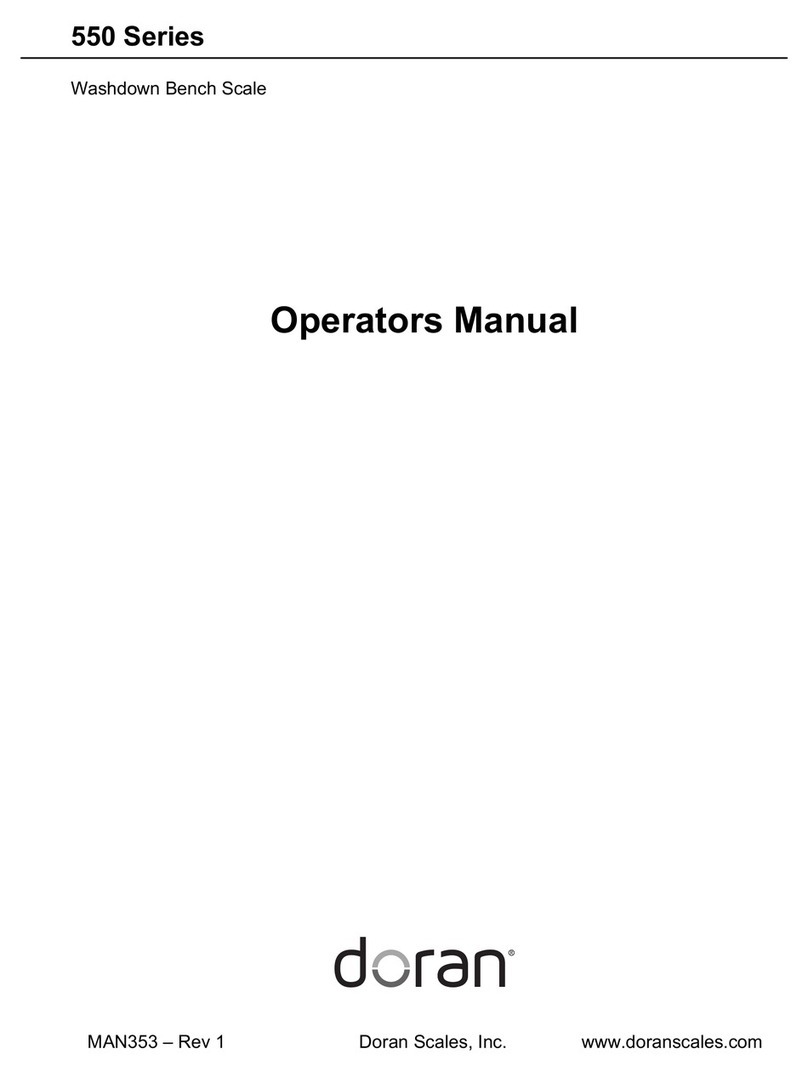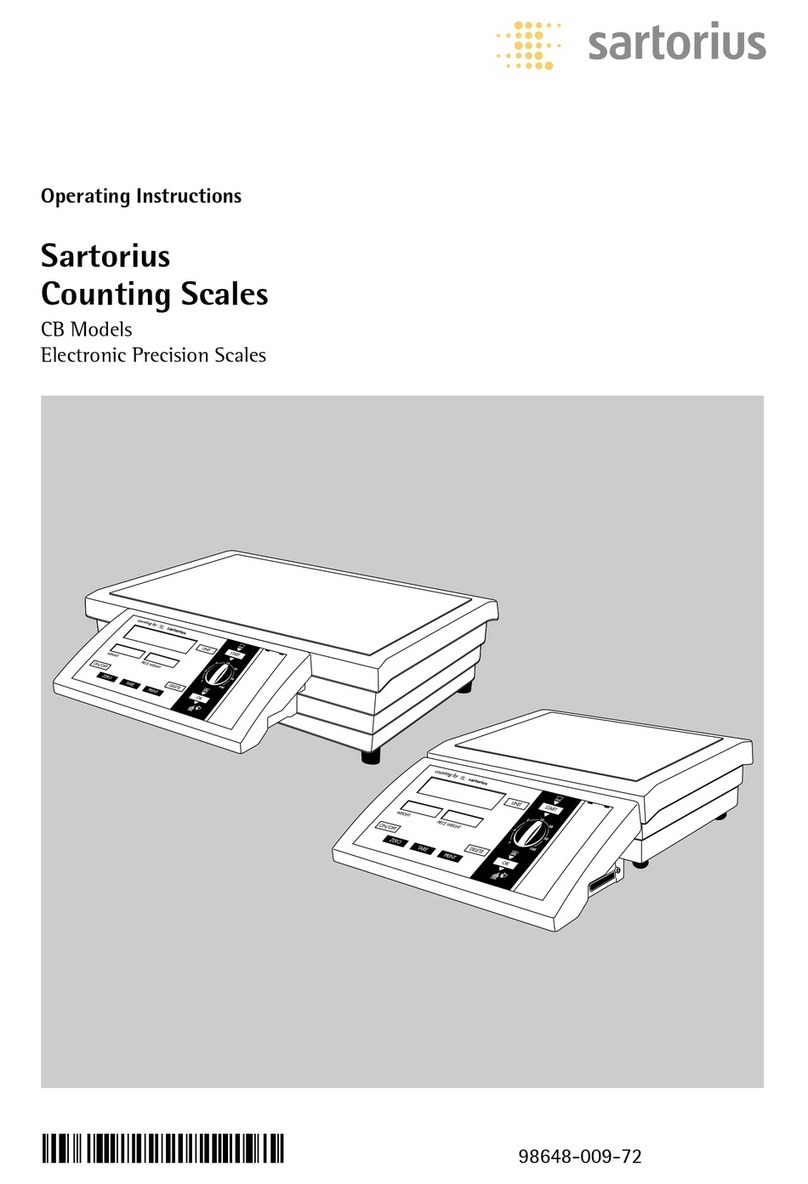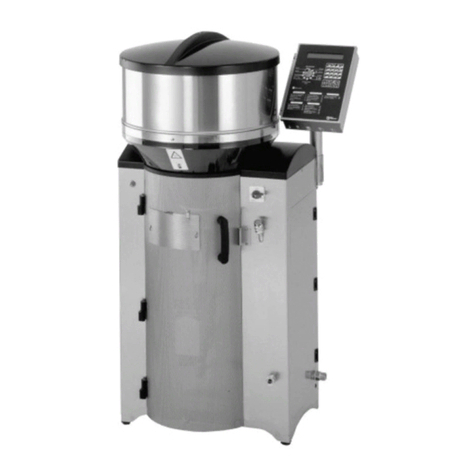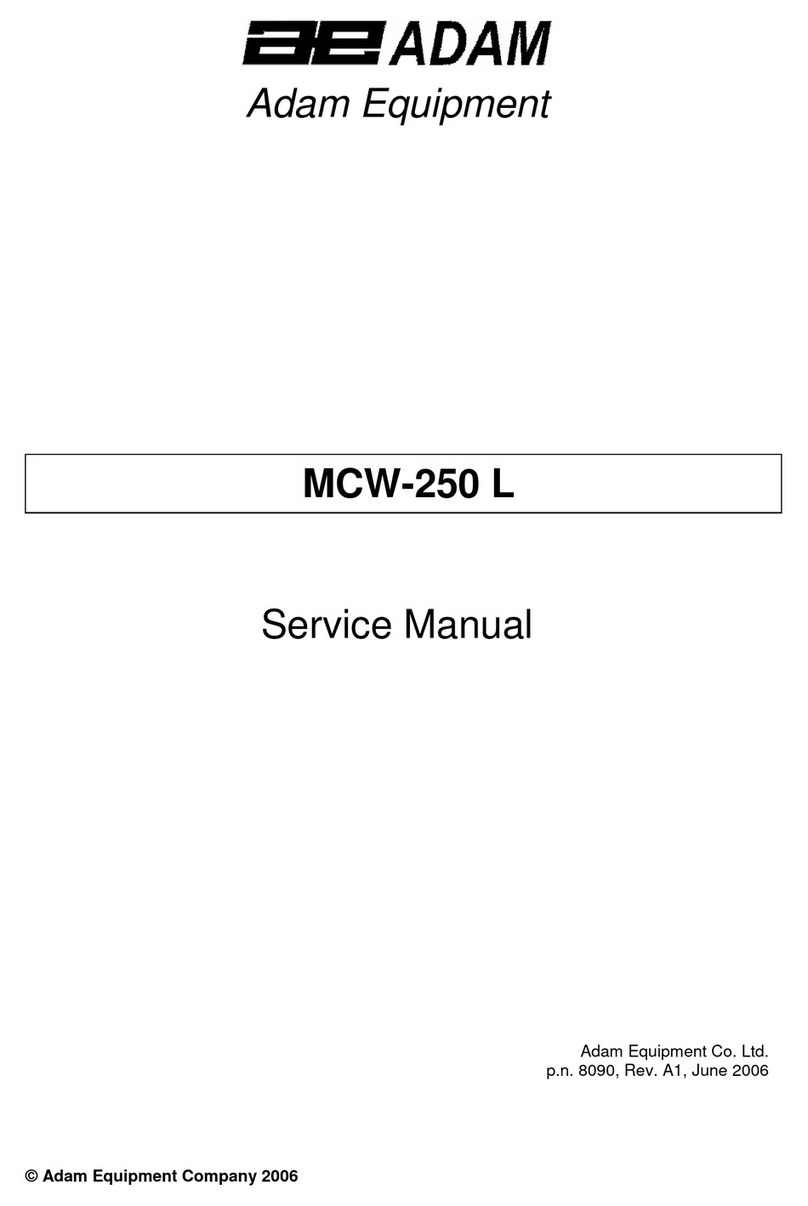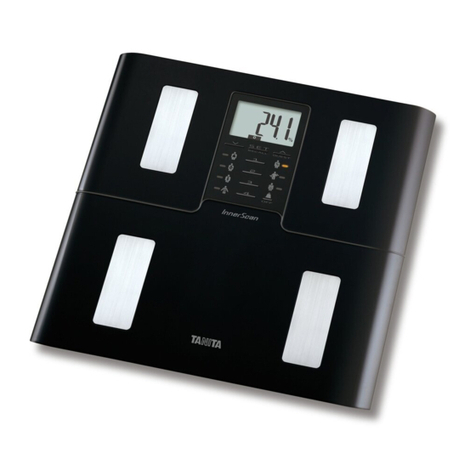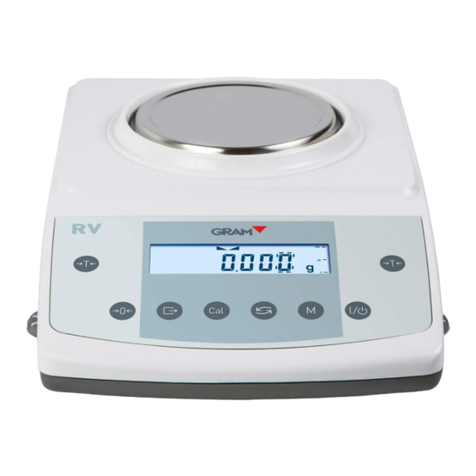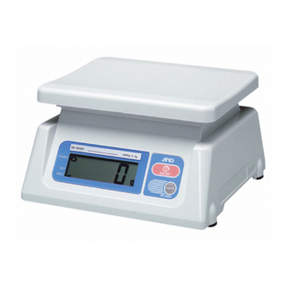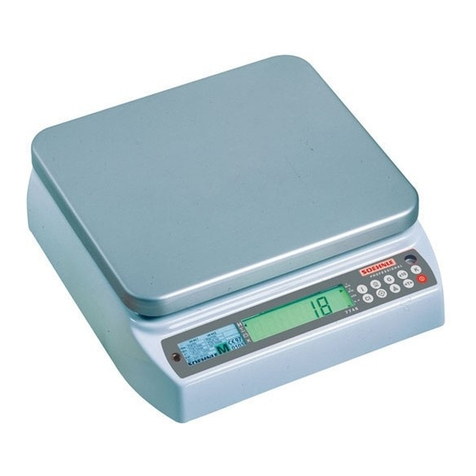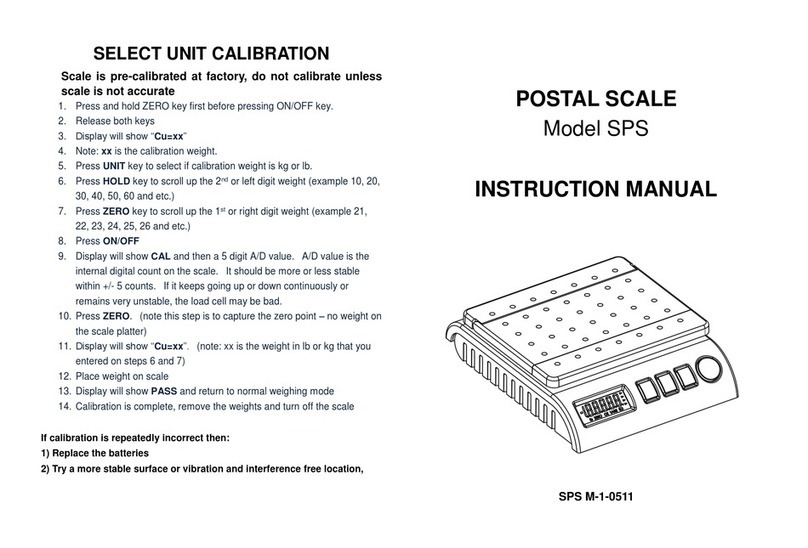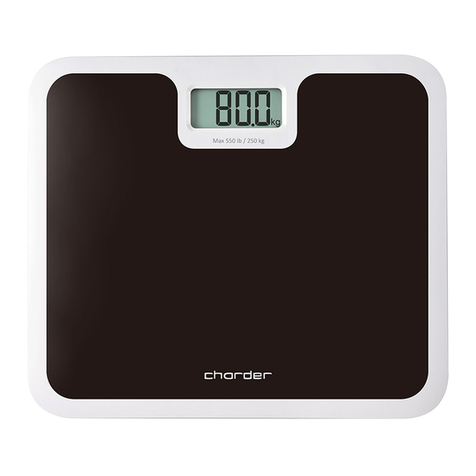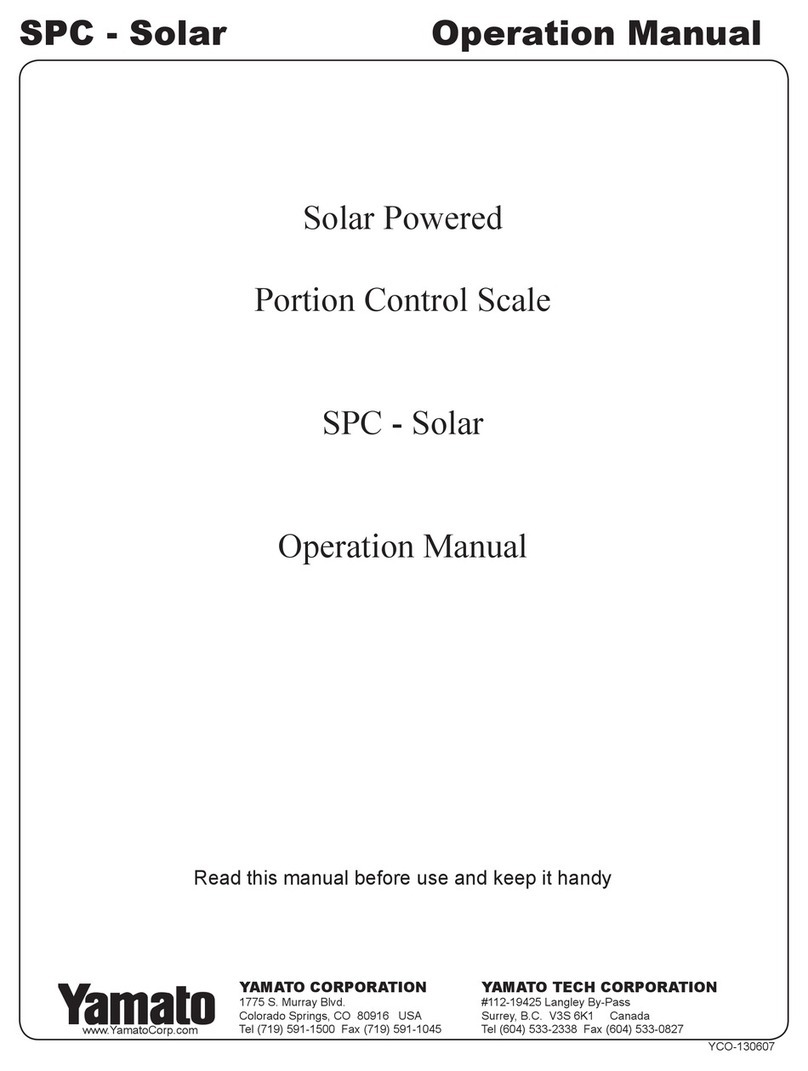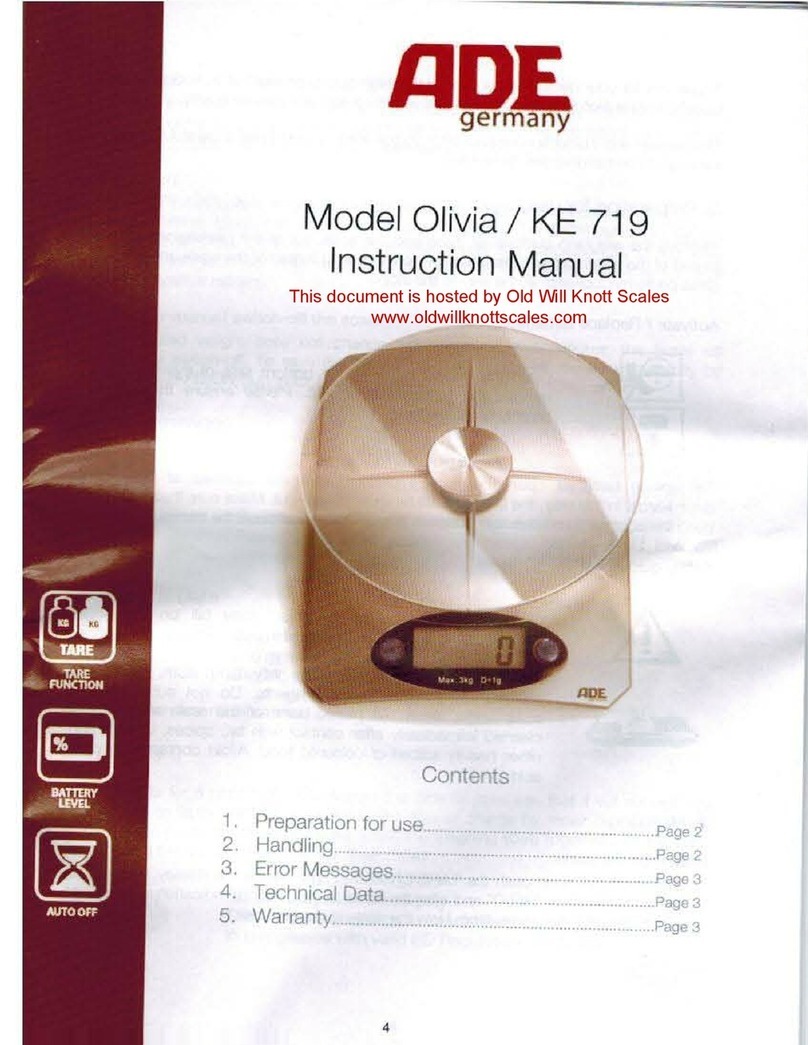DATAPROCESS DSP 500 User manual

ELECTRONIC SCALE
DSP 500
USER MANUAL - v. 4.0
UV119UE
Doc-a-Ware 960510


UV119UE - DSP 500 : USER MANUAL - v. 4.0 PAGE i
WARNING
This manual makes reference to scale model ASR (type approval no. I95-004), manufactured by
DATAPROCESS S.P.A. and commercialised as DSP500 Scale.
All the information and instructions that must be observed in order to obtain the functionality
declared by the Manufacturer are included in this manual.
The scale hereby described complies with the current security rules.
The direct access to its inner parts and/or the insertion of any object or liquid into the scale is
forbidden.
Any action on the scale which is not within those expressly described in this manual must be
performed by our authorised agents.
The installation must be performed following the safety regulations in force as well as any further
procedures reported by this manual.
The manufacturer declines all responsibilities for:
•damages caused by improper installation, use and maintenance
•income loss due to possible failure
•incorrect use of the equipment
•damages caused by non-authorised technical service and/or by the use of non original
replacement parts
The information contained in this manual is subject to change without notice, and it represents no
commitment by the Manufacturer.

PAGE ii UV119UE - DSP 500 : USER MANUAL - v. 4.0

UV119UE - DSP 500 : USER MANUAL - v. 4.0 PAGE iii
TABLE OF CONTENTS
?
SECTION INDEX ..................................................... page 1
FEATURES.............................................................. page 2
SPECIFICATIONS ................................................... page 3
DISPLAY.................................................................. page 4
KEYBOARD............................................................. page 5
PRESENTATION
SECTION INDEX ..................................................... page 7
SWITCHING ON ...................................................... page 8
DISTINCTIVE FEATURES....................................... page 9
OPERATIONAL SEQUENCE .................................. page 10
TARE ....................................................................... page 11
RESET TO ZERO .................................................... page 11
PLU RECALL........................................................... page 12
PRICE VIA KEYBOARD ......................................... page 13
PRINT LABEL ......................................................... page 14
LABEL LAYOUT...................................................... page 15
RECEIPT TRANSACTIONS .................................... page 16
VOID ........................................................................ page 16
RETURNS................................................................ page 17
SUB-TOTAL AND DISCOUNTS.............................. page 17
PRINT RECEIPT...................................................... page 18
CORRECTING RECEIPTS ...................................... page 18
RECEIPT LAYOUT.................................................. page 19
PAPER REPLACEMENT......................................... page 20
PAPER-CASSETTE PREPARATION ..................... page 21
DAILY USE
SECTION INDEX ..................................................... page 23
CLEANING............................................................... page 24
ERROR MESSAGES ............................................... page 25
PROBLEM SOLVING .............................................. page 26
MAINTENANCE AND
PROBLEM SOLVING
SECTION INDEX ..................................................... page 27
CONFIGURATIONS, PAPER ROLLS ..................... page 28
INSTALLATION....................................................... page 29
NETWORK INSTALLATION, START, ACTIVITY ... page 30
CONNECTING TO PC ............................................. page 31
CONFIGURATIONS
AND
INSTALLATION
SECTION INDEX ..................................................... page 33
INTRODUCTION TO PROGRAMMING................... page 35
ACCESS BY KEY-CODE......................................... page 36
LEVELS AND GROUPS .......................................... page 37
SELECTION AND EDITING .................................... page 38
FUNCTION CODES................................................. page 39
GROUP 0: GENERAL PROGRAMMING ................ page 41
GROUP 1: PLU PROGRAMMING........................... page 53
GROUP 2: SETTINGS............................................. page 61
GROUP 3: RECEIPT PROGRAMMING .................. page 69
GROUP 4: LABEL PROGRAMMING...................... page 75
GROUP 5: NETWORKING AND INTERFACES ..... page 83
GROUP 7: REPORTS.............................................. page 91
GROUP 8 & 9: TOTALS & GRAND TOTALS......... page 95
PROGRAMMING

PAGE iv UV119UE - DSP 500 : USER MANUAL - v. 4.0

UV119UE - DSP 500 : USER MANUAL - v. 4.0 PAGE 1
PRESENTATION
FEATURES .............................................................. page 2
SPECIFICATIONS....................................................page 3
DISPLAY ..................................................................page 4
KEYBOARD .............................................................page 5
PRESENTATION
?

PAGE 2 UV119UE - DSP 500 : USER MANUAL - v. 4.0
?
FEATURES
The scale Model DSP500 is a high performance cell-load type machine.
Complete in-built printer (for labels or receipts) with removable paper cassette, it answers a wide
range of different requirements - used as a stand-along unit or connected on -line with others
scales.
•programmable use for: 10 sales departments
20 operators, programmable:
ON SERVICE
IN TRAINING
•2 selectable price modes: PLU (programmed), with temporary price revision option
(special price SP)
Random price without code (RP Random Price)
•3 price basis available: Liras/kg
Liras/100g
non weighted
•4 printout options: automatic or manual label
pre-pack label
receipt
single-item receipt
•20 label layouts: 10 pre-set layouts
10 user-programmable layouts
•2 load capacities and
divisions:
6 kg load capacity / 2 g per division
15 kg load capacity / 5 g per division
•2 tare settings: pre-set tare in PLU (only for pre-packed items)
weighed tare (fixed tare selectable)
•5 types of sales totals: per operator
per department
per item (PLU)
per hour
per scale
•3 grand totals: X totals
Z totals
ZZ totals
(daily grand totals)
(longer time period totals)
(test totals, for technical service only)
•advertising text on display: scrolling, at programmable speed rate
by overwriting
•4 levels of key access to
programming
Level 4 only for technical service
•external connections: connection to PC via RS232c serial interface port
scale network, for max. no. 10 scales on-line (optional)
connection to remote PC (via optional RS422 interface)

UV119UE - DSP 500 : USER MANUAL - v. 4.0 PAGE 3
?
SPECIFICATIONS
The DSP 500 Scale can be supplied for two different load capacities and divisions:
6kg/2g (11 lb - 1/16 oz)
15kg/5g (22 lb - 1/8 oz)
It is supplied equipped with:
- no. 1 RS232 serial interface, 256 kB Eprom, 256 kB RAM already
installed
- 1 paper cassette, inserted
- User Kit including: - User Manual, 1 copy
- 1 thermal paper roll
- 1 sheet of labels for cassette customisation
- 1 power cable (for Italian version only)
- 1 pin for small-size core paper roller
OPTIONS available on customer request:
- Extension Card for DPnet local network + 1 line RS422
Serial Interface
- additional paper cassettes
- PCMCIA memory card adapter (for use only with
optional extension card)
•Printing: labels or continuous paper rolls (self-adhesive or plain) with automatic detection
of paper cassette and printed paper counter, by km.
Print speed: 90 mm/sec - 1,5 sec/label.
Paper roll cassette easily accessible and removable for a quick paper replacement;
programmable for receipts, labels or continuous self-adhesive paper rolls.
•Label layouts: programmable for each PLU to be selected within 20 label layouts (10 label layouts
pre-set by manufacturer + other 10 layouts, user-programmable for size, type, data position).
•Receipts: 6 line programmable message to be freely positioned as header or at receipt end.
Enable print of: date and time, product description, bar-code, change, coupon.
Voids on one or more transactions on current receipt.
•PLU dynamic storage. Storage capacity: max. 3250 PLU without text or over 450 PLU of
350 characters each.
20 characters available for item description of each PLU plus 375 character for ingredients.
7-digits code and programmable number of digits to enter for PLU recall.
•Extended keyboard layout base configuration including: 99 PLU direct keys, 13 function
keys and 10 numerical keys, fully programmable.
Software key with 4 levels programming access (4th level for technical service only) , to
ensure data security and easy programming.
•Wide screen display: 2 lines of 20 alpha-numeric digits each (readable from two-sides).
Advertising text of 200 characters to be programmed: by scrolling or overlapping on display.
•Optional scale connection to DPNet network: up to 10 scales can be linked in one a single
network.
Connection to PC: uploading/downloading of PLU and sales totals reading, scale
programming. 2 or more networks connectable to one single PC.
Connector for opening cash-drawer.

PAGE 4 UV119UE - DSP 500 : USER MANUAL - v. 4.0
?
DISPLAY
The scale display is a 2-side type (for customer and for operator), each side with 2 lines of 20
characters each and one set of LED lamps.
Display: operator side
AREA DESTINATA AL LOGO COMMERCIALE
Display: customer side
On the first line the item description or scale messages are visualised, whilst the second one is for
prices and weight values.
The LED signalling lights indicate the price calculation and other values, as reported hereunder
NET : net weight
FIX : fixed tare
L/kg : price per kg
L/100g : price per 100g
PRE-PACK : pre-packed label
PAPER : label roll nearly out

UV119UE - DSP 500 : USER MANUAL - v. 4.0 PAGE 5
?
KEYBOARD
The keyboard has a rubber transparent cover with contoured relieves. The key functions are shown
on a pre-printed card placed under the keyboard cover. Further notes can be hand-written by the
operator (e.g.: PLU description). The key function card can be easily replaced.
1
10 19 28 37 46 55 64 73 82 91 FZER
O
↑
↑↑
↑
2
11 20 29 38 47 56 65 74 83 92 R S P
3
12 21 30 39 48 57 66 75 84 93 FIX VOI C
4
13 22 31 40 49 58 67 76 85 94 T X PLU
5
14 23 32 41 50 59 68 77 86 95
6
15 24 33 42 51 60 69 78 87 96 789
7
16 25 34 43 52 61 70 79 88 97 456
8
17 26 35 44 53 62 71 80 89 98 123
9
18 27 36 45 54 63 72 81 90 99 0PRINT
1 ÷99 PLU / operator direct recalling PLU or operators
F function <F>+ key code for accessing programming mode
ZERO zero-setting direct loaded weight is considered as 0
paper feed direct feeds paper; positions label
RP random price <RP>+ nnn selects item price without PLU
SP special price PLU + <SP>+ nnn modifies PLU programmed price
PB price basis <RP>+ <PB>+ nnn select random price into L/kg or L/100g
FIX fixed tare <T>+ <FIX>fix value of weighed tare
VOID void <VOID>+op +<>+
PRINT>
<VOID> + <PRINT>
enter void on one or more receipt items
enter void for last label (subtracted from
totals)
C cancel direct delete the last entered data
T weighed tare direct current weight is considered as tare
X multiply price + <X>+ nnn input the no. of items after price
PLU PLU code nnn + <PLU>closes PLU code entry
0÷ 9numerical keys nnn enter a number, of meaning according to
above mentioned keys
PRINT print and total direct
<PRINT>+ operator
print label, or
print receipt

PAGE 6 UV119UE - DSP 500 : USER MANUAL - v. 4.0

PAGE 6 UV119UE - DSP 500 : USER MANUAL- v. 4.0
DISCARD THIS PAGE
(USED ONLY FOR PAGE NUMBERING ALIGNMENT)

UV119UE - DSP 500 : USER MANUAL- v. 4.0 PAGE 7
DAILY USE
SWITCHING ON.......................................................page 8
DISTINCTIVE FEATURES .......................................page 9
OPERATIONAL SEQUENCE...................................page 10
TARE........................................................................page 11
RESET TO ZERO.....................................................page 11
PLU RECALL...........................................................page 12
PRICE VIA KEYBOARD ...................................page 13
PRINT LABEL..........................................................page 14
LABEL LAYOUT......................................................page 15
RECEIPT TRANSACTIONS..................................... page 16
VOID.........................................................................page 16
RETURNS ................................................................page 17
SUBTOTAL AND DISCOUNTS ...............................page 17
PRINT RECEIPT ......................................................page 18
CORRECTING RECEIPTS.......................................page 18
RECEIPT LAYOUT ..................................................page 19
PAPER REPLACEMENT .................................... page 20
PAPER-CASSETTES.............................................page 21
DAILY USE

PAGE 8 UV119UE - DSP 500 : USER MANUAL- v. 4.0
SWITCHING ON
For switching-on the scale, put to on position the switch which is placed at the scale left side,
under the bottom plate.
After switching on, the scale carries out an automatic routine test cycle; the digits from 0 to 9, with
comma and LED lights are represented on the display, then the display switches off for a few
seconds.
After the test cycle is over (in 15 seconds approx.) if the scale detects no anomalies, the weight is
reset to “0” and then the scale is ready to be used.
The zeros, corresponding to weight, price and total can be visualised on the display as follows:
0, 0 0 0 0 0
Networked scales
If the scale is to be used on-line with other scales, a test of network connection is carried out as it
is switched-on, after the routine test cycle. The message LOOKING FOR SCALES is represented
on the display. If all the scales pre-programmed to work on-line turn out to be actually linked, the
scale exits the search condition and can work regularly.
Contrarily, the message continues being displayed and the addresses of the scales which, although
programmed in network configuration, result to be disconnected, are visualised by pressing <C>:
S C A L E S M I S S I N G
n n n n n n n n n n n
where:
n= network address of absent scales
By pressing <PRINT> the current network configuration is accepted and the scale is enabled to
normal work. The pressure of any other key reactivates the search of the network-linked scales.
Weight different from zero
If, during the test cycle, the scale detects a floating weight (for example caused by an accidental
bump into the platter) the message CHECK CONVERTER is displayed. When the weight
stabilises, then the scale returns to its original condition. If the weight cannot stabilise call for
technical service.
If during the test cycle a weight lower than “0” is found, the message ZERO SETTING will be
displayed and the scale remains on a standby state until reset to zero is carried out. The occurrence
may be caused by the weighing platter badly positioned, or missing.
When the weight automatic reset procedure is completed, and the scale is ready to start working,
the zeros for weight, price and total are visualised on the display. Now, weight is correctly
indicated as any item is put on the platter.

UV119UE - DSP 500 : USER MANUAL- v. 4.0 PAGE 9
DISTINCTIVE FEATURES
The DSP500 scale has a set of 3 special features which the user should be immediately aware of:
MAPPING OPERATOR KEYS (and other “optional” keys)
Only the standard set of keys have a pre-defined lay-out on the keyboard, although modifiable. The
operator keys are, for instance, not mapped into any default position. So one or more operator keys
(up to 20) must be mapped onto the keyboard to be able to work (unless working with labels or
single-item receipts and only a single pre-set operator id.).
Programming function 07 KEYBOARD FUNCTIONS (see chapter on PROGRAMMING)
accomplishes this task. To any of the available key-functions a function-code is associated (e.g.
<OP. KEY 1> = code 131, <OP. KEY 2> = code 132. etc.) and this code is mappable to any of the
actual keyboard keys. The same mechanism is used to map to the keyboard a set of “optional”
keys, as <RETURNS>, <DISCOUNT>, <RECEIPT CORRECTION>, and payment mode keys -
<CASH>, <CHEQUE>, etc.-.
Operator and “optional” keys are normally mapped to any of 99 generic white keys available. The
same applies for the PLU hot-shot keys. However there is no constraint on key mapping, and also
the pre-set coloured keys can be re-mapped.
PRINTING MODES
There are a number of print modes available (receipt, labels, etc.). Some functions may be
enabled/disabled according to the current mode selected and also the way to accomplish some
tasks may vary accordingly. Here is a list of the print modes available:
1. RECEIPT: a receipt lists all the items sold (possibly returned) to a customer. In this mode a set
of functions are enabled: sub-total, change computation, free rate discount, payment mode
(cash, credit card, cheque, coupon, etc.) and receipt correction after issuing.
2. SINGLE-ITEM RECEIPT: every single-item receipt carries a single item sold. It is very much
like a label in scope, but prints on the same paper-roll used for receipts.
3. LABEL: again single item sales but printed in the typical sticky label paper. In addition the
graphical lay-out is completely programmable: text, bars and boxes positionable and
dimensionable at will.
4. AUTOMATIC LABEL: just like a normal label but printing is obtained simply by putting items
on the print plate, non need to press any key.
5. PRE-PACK LABEL: pre-pack labels are automatic labels to which pre-set tares can be applied
(for pre-packing purposes).
The DSP500 scale can switch between the print modes automatically, recognising up to 3 pre-set
printing modes/paper formats according to a set of identifier marks on the paper cartridges.
“PREFERRED” PRICE SOURCE
The DSP500 scale may operate in “PLU-prone” mode, i.e. optimised for PLU entering (and only
spare use of random-price entries), or in “Random Price prone” mode, i.e. optimised for hand
entering of unit prices (and only spare use of PLU entries).
In “PLU-prone” mode any digit entered on the numeric keypad is by default interpreted as part of a
PLU code. To type in a “random price” the <RP> key must be hit before.
In “Random Price prone” mode any digit entered on the numeric keypad is by default interpreted
as part of a unit price. To type in a PLU code the <PLU> key must be hit before.
The choice between the 2 modes can be set in programming mode to fit the user needs. Hot-shot PLU
keys, if programmed, can be used in both modes.

PAGE 10 UV119UE - DSP 500 : USER MANUAL- v. 4.0
OPERATIONAL SEQUENCE
The operational sequences are different for the scale being set for working with labels or with
receipts as shown hereunder:
SEQUENCE FOR
Refer to the bracketed pages: LABELS RECEIPTS
TARE (page 11)
ZERO SETTING (page 11)
tare or zero reset
(when required)
tare or zero reset
(when required)
position product
on scale platter
position product
on scale platter
PLU RECALL (page 12)
PRICE VIA KEYBOARD (page 13)
price selection
by entering PLU recall code
or random price
price selection
by entering PLU recall code
or random price
total computed
by weighing,
or by entering no. of items
total computed
by weighing,
or by entering no. of items
RECEIPT TRANSACTIONS (page 16)
RETURNS (page 17)
record transaction
(assigning it to operator)
VOID ON RECEIPT (page 16)
void (if required)
SUB-TOTAL AND DISCOUNT (page 17)
sub-total and discount
(if required)
PRINT LABEL (page 14)
PRINT RECEIPT (page 18)
transaction closing
with label printout
transaction closing
with receipt printout
PRINT RECEIPT (page 18)
change computed and
printed on receipt
(if required)
VOID ON LABEL (page 16) void (if required)
CORRECTING RECEIPTS (page 18)corrections to receipt
(if required)

UV119UE - DSP 500 : USER MANUAL- v. 4.0 PAGE 11
TARE
T
Tare
Put the container or paper sheet on the scale platter and then press <T>to
subtract tare weight.
The subtracted value is transferred to tare and is no longer displayed. The LED
light NET on signals that the tare is activated.
With automatic weighed tare activated, when the scale platter is unloaded, the
tare weight, preceded by a minus (-) is visualised by the weight display.
FIX
Fixed tare
To store or ‘fix’ the same tare for a number of weighings, press the key <FIX>
that fixes the entered tare. By pressing <FIX>once again, the stored tare is
cleared.
The LED light FIX on signals that the fixed tare is activated.
Clearing tare: An entered tare value can be cleared by one of the following ways:
•By unloading the goods from platter after the transaction has been printed.
•By loading the platter and then unloading it after that the weight stabilises.
•By pressing the key <T>with gross weight set to zero.
PRE-SET TARE (on Pre-pack only)
A pre-set tare can be assigned to the PLU ,either by entering the tare value through the keyboard
numerical keys (see progr. function 04 MANUAL TARE) or automatically, by weighing the
container (see progr. function 05 WEIGHED TARE).
When the scale is on pre-pack mode, if a PLU with its assigned tare is entered, PT followed by the
tare value expressed in kg. (i.e.: 0.938 kg) is visualised on the display. After a few seconds the
PLU description and the net weight will also be displayed, and the label is printed.
RESET TO ZERO
ZERO
By pressing <ZERO> with the empty platter, the weight is set to zero - provided
that the difference in positive as compared with the weight resulting at switching-
on is less that 2 % of the scale max. load capacity (it will be 120 g for the scale
supplied for 6 kg., and 300 g for the scale supplied for 15 kg.). If higher
differences result, switch-off the scale and then switch-on again.
HALF-AUTOMATIC RESET
If the scale detects a weight lower than zero ( initially set, or set later on) , on the display the
weight signalling lights off and just one zero for price remains alighted. If the negative weight is
stable, after some seconds the scale proceeds to automatic weight reset. Even in this case, the
difference compared with the weight resulting at switching-on must be less that 2 % of the scale
max. load capacity (that is: 120 g for the scale supplied for 6 kg., and 300 g for the scale supplied
for 15 kg.). If higher differences result, recalibrate the scale by switching it off and then switching
it on again.

PAGE 12 UV119UE - DSP 500 : USER MANUAL- v. 4.0
PLU RECALL
The daily use of the DSP 500 Scale is based on the PLU, that is on pre-programmed prices.
Each PLU is marked by a numeric code, 1 up to 7 digits long (see function 23 PLU CODE LENGTH).
Up to 3045 PLU can be stored without text (see progr. function 10 PLU EDIT ). If some text for
product description and, where needed, for ingredients is to be added, then the maximum number
of programmable PLU decreases. For example: using 350 characters for item description and
ingredients, the max. number of PLU lower to approximately 450.
Some of these PLU can be associated to the 99 direct recall keys available on the keyboard (see
progr. function 00 DIRECT PLU ).
Attention: the code number and the dedicated key number are NOT the same (Code
no. 59238 may correspond to key no. 27).
Note that codes 1 and 2 are used by the Random Price functions, and
therefore they cannot be used for PLU.
PLU can be recalled by the two ways reported hereunder:
•directly, by pressing one of the 99 hot-shot keys (fast PLU recall) on the keyboard, if
programmed (see prog. funct. 00 HOT-SHOT KEYS).
•by using the numerical keys + the key <PLU> to confirm the entry. In PLU RECALL
priority the confirmation may also be given without <PLU> key on time-out basis (see
progr. function 22 PLU TIME LIMIT). Remember that codes 1 and 2 cannot be used.
With non-weighed item PLUs just enter the quantity by the numerical keys (if quantity is greater than
1).
When trying a recall for a non-programmed PLU, the message NON AVAILABLE is displayed.
Abort the request and press <C>to continue.
VARIATION OF PLU PRICE
Although making use of all the pre-set codes, the DSP 500 scale offers the possibility to enter a
temporary price variation and keep the PLU description and information at the same time.
SP
SPECIAL PRICE
To change a price associated to a PLU press <SP>(Special Price). The new
price must be higher or equal to the minimum price programmed for that PLU.
Attention! The above function can be selected provided that the
following conditions are present:
•It has been enabled by progr. function 25 OPERATION SETTINGS
•The function “price revision” was enabled when programming the
recalled PLU (see progr. funct. 10 PLU EDIT).
DISCOUNTS
pre-set by quantity
pre-set on single PLUs
free on total amounts
In addition to Special Prices, a PLU unit price can be set to 3 different
amounts, with each amount being automatically used if weight of
quantity is above one of the two thresholds, thus providing
“weight/quantity-based” discount capabilities. The thresholds for
automatic discounts can be specified for each PLU (see funct. 10 PLU
EDIT).
Discounts can also be provided on a fixed base for each PLU (see funct.
10 PLU EDIT) or freely on the total amount of a receipt (see SUB-
TOTAL AND DISCOUNTS).

UV119UE - DSP 500 : USER MANUAL- v. 4.0 PAGE 13
PRICE VIA KEYBOARD
By this function, the DSP 500 scale offer the possibility to enter non-programmed prices.
The procedures to be followed are slightly different according to the priority that was pre-set
during programming: PLU RECALL or SELECT PRICE (see progr. function 27 OPERATION
MODE).
SCALE PRE-SET WITH
PLU RECALL PRIORITY SELECT PRICE PRIORITY
RP
(Random Price)
The message
WEIGHED RANDOM
PRICE is displayed as
key <RP> is pressed.
ENTER PRICE
If the scale was pre-set to work
on SELECT PRICE priority,
enter directly the price you need
by the numerical keys. The
message WEIGHED RANDOM
PRICE.
Attention: For using this function with
the scale set with PLU RECALL priority, the
possibility to select random prices must have
been expressly programmed (see progr.
function 25 OPERATION SETTINGS). If
after having pressed the key <RP> the
message NOT AVAILABLE is displayed, that
means that the option above was not enabled.
Press <C>to cancel the request.
TIME LIMIT !
A time limit can be programmed between one
entered digit and the successive one (see progr.
function 21 NUMERICAL KEY TIME LIMIT).
Once elapsed that time limit, the entered digit shall
be considered as the beginning of a new price.
HOW TO SELECT PRICE
WEIGHED
RANDOM PRICE
If the item being considered is priced by weight, now enter it.
You can choose the price basis, before entering it, by pressing <PB>to
select between price per kg. or per 100 g., as signalled by the LED lights on
the display (L/kg or L/100g).
Note:
PB
The <PB> is activated only when selecting a random price
(RP), and it must be pressed before entering the price. If you
try setting a price per 100g. after the price has already been
entered, the error signalling SEQUENCE ERROR is
displayed. Press <C>to cancel and then repeat again the
procedure in the correct sequential order, as follows:
<RP> key + <PB> key + price.
NON-WEIGHED
RANDOM PRICE
X
If the item is non-weighed, press<X> after entering the price. The message
NONWEIGH. RAN. PRICE is represented on the display. At the weight
position on the display, the symbol @lights up, followed by the number 1.
If the quantity of items is more than 1, type in the requested quantity.
Table of contents
